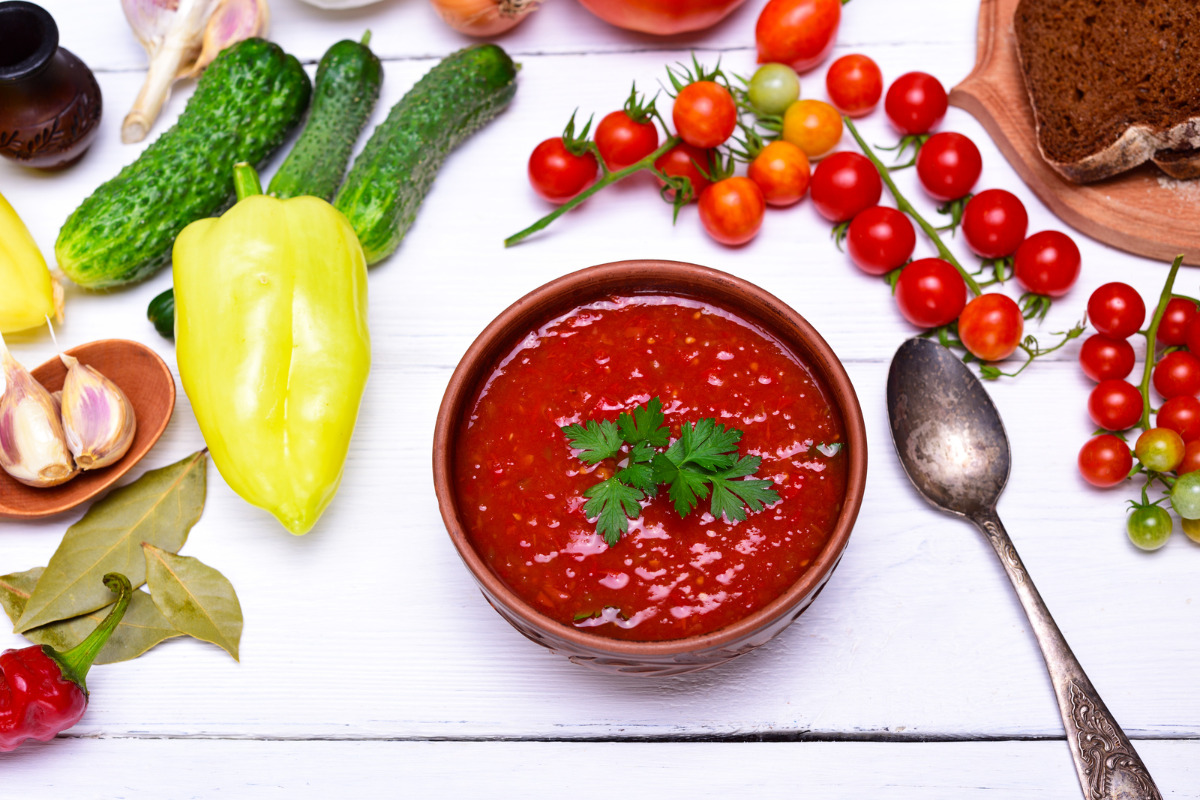Knowing how to make soup creamy and delicious is one thing. Actually transporting it to a potluck or special occasion is another. What if it spills, gets cold, or spoils before it gets to where it needs to be? Well, I’ve got the answers to all your soup transporting problems with my guide on how to easily transport soup!
You can easily transport soup using a thermos, lunchbox, or leak-proof containers. But there’s a ton more you need to know. So, let’s hop to it!

Contents
📌 Preparing Soup for Transport
Cooling and Reheating Strategies
To transport soup safely, you’ll wanna wait till it cools to room temperature first to prevent sweating. Sweating creates excess moisture that can cause the container to leak. When reheating, do so slowly and evenly. You can use low heat in a crockpot or slow cooker, stirring occasionally to maintain even heating and prevent flavor loss from overheating.
Securing Lids and Leak Prevention
Knowing how to easily transport soup means removing all possible problems. An untight lid is one of them. Make sure to use a container with a tight-fitting lid that snaps securely into place. This will also apply to any soups from fast food restaurants you’ve bought. Double-check to make sure the lids are closed and sealed.
Also, place the container upright in a sturdy bag or container that won’t tip over during transport. You can also place a layer of paper towels or a clean kitchen towel between the container and the bag for extra protection.
Utilizing Insulation Techniques
One of the best ways how to easily transport soup is by using towels or blankets to insulate the container. You can wrap the container in a thick towel or blanket or place it in an insulated bag or cooler. You can also use a wonderbag, thermos, or vacuum flask to keep the soup hot for several hours.
Make sure to check the temperature of the soup regularly to ensure it stays at a safe temperature. If the soup drops below 140°F (60°C), you should reheat it before serving.
💡 Best Ways to Transport Soup
Plastic vs. Glass Containers
You have two main options for convenient and quick soup transport. A plastic or glass container. Plastic containers are lightweight and durable, but they’re not as heat-resistant as glass containers and often retain odors from previous meals.
Glass containers are significantly more heat-resistant and do not retain odors. Still, they are heavier and more fragile than plastic containers. Choosing either is about availability and personal preference.
Insulated Thermos Options
An insulated thermos is one of the best ways to transport soup, as it’ll keep your soup hot for hours on end. There are tons of different insulated thermos options available, including stainless steel and plastic. Aim for a leak-proof one with a wide mouth for easy filling and cleaning. Mason jars are a great example of using what you have.
Specialized Soup Transport Containers
If you transport soup a lot, it’s worth investing in top-tier soup transport containers. Some popular options include snap-lock soup containers, vacuum flasks, and lunchboxes with built-in soup containers. Look for ones that are also easy to clean and made of high-quality materials.
🔎 Maintaining Temperature and Food Safety
Understanding the Danger Zone for Bacteria
Bacteria grow rapidly between 40°F and 140°F, which is known as the “danger zone.” This applies to transporting soup, so to prevent bacterial growth, keep cold soups below 40°F and hot soups above 140°F.
You can use my guide to freezing soups for the safest and most convenient ways of freezing soup!
Using Coolers and Insulated Bags
To maintain the proper temperature of your soup during transportation, use coolers or insulated bags. These containers help to keep your soup hot or cold and prevent it from entering the danger zone. You can also use frozen gel packs to keep your soup cold in coolers.
📖 Additional Tips and Tricks
Choosing Soup Recipes for Easy Transport
Choosing the right soup recipe that’ll work best when being transported can make all the difference. You can opt for soups that are thick and hearty, such as potato soup or vegetable soup. They tend to hold up better during transport and are less likely to spill or leak.
Learn how to thicken soup with my guide!

Creative Reuse of Household Items
You could use a cardboard box to create a makeshift carrier for your soup container. Simply cut a hole in the top of the box slightly larger than your container, and then place the container inside. You can also use a plastic bag to transport your soup, although this isn’t the most secure option.
Mason jars are another fantastic option you may have lying around. Not only do they provide a secure and spill-proof container, but most have a built-in handle that make them easy to carry.
🧐 Frequently Asked Questions
Bulk containers such as insulated vats or large, sealed bags are commonly used for this purpose. But for large personal events, consider using a large leak-proof container or a cooler to keep the soup hot and prevent spills.
Choosing a container that’s leak-proof and well-insulated, such as a thermos or a lidded container with a sealable top. If possible, place the container on the floor of the car to keep it stable and avoid spills.
To pack soup for travel without spillage, choose a container with a snap-lock lid or a screw-top lid to prevent leaks. You can also wrap the container in a towel or a small blanket to provide extra insulation and prevent spills. Also, try placing soup in a bag inside a container to prevent spills.
Consider using a large insulated container, such as a thermos or a cooler, to keep the soup hot during transport. You can also divide the soup into smaller containers to make it easier to carry.
